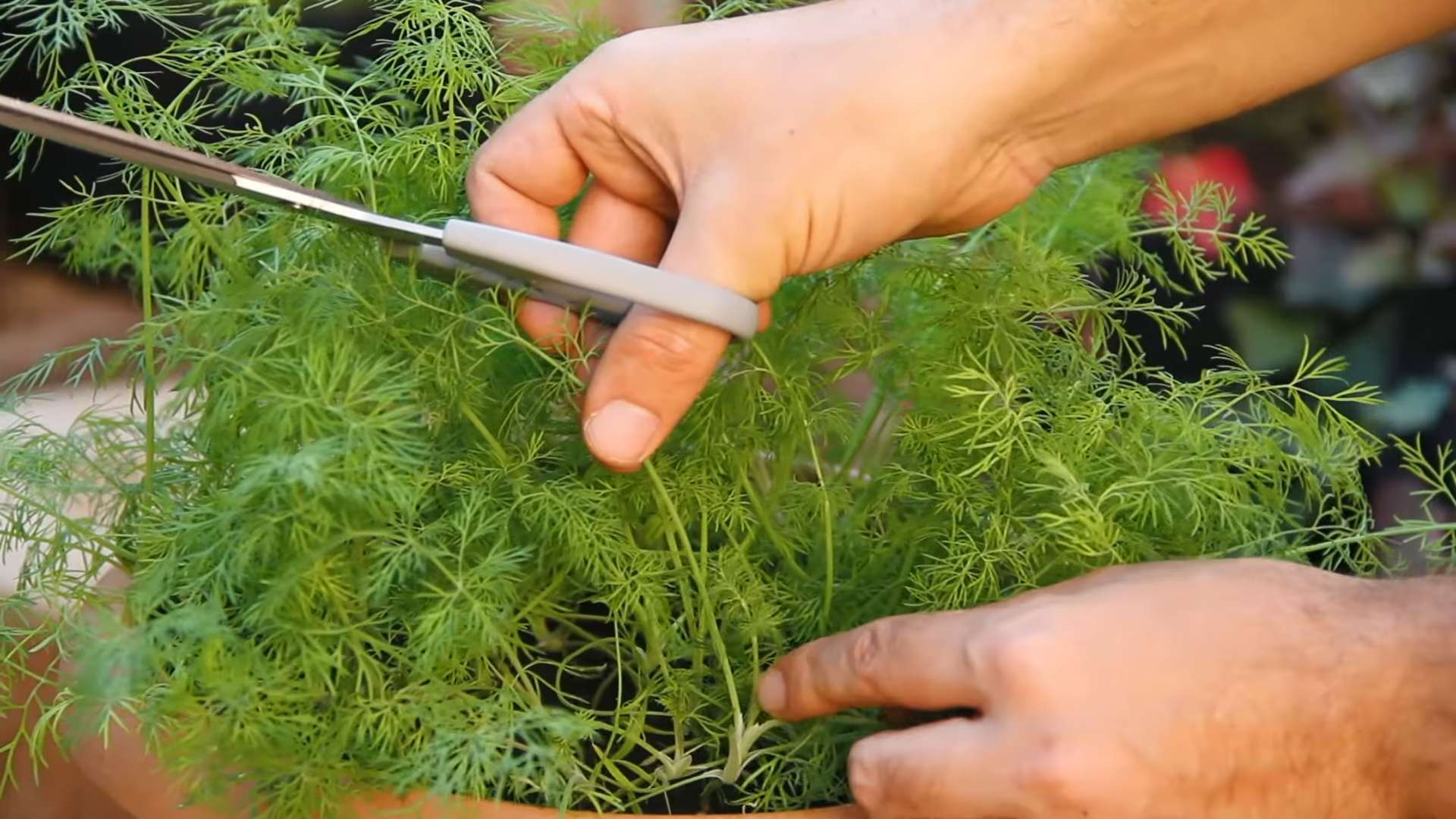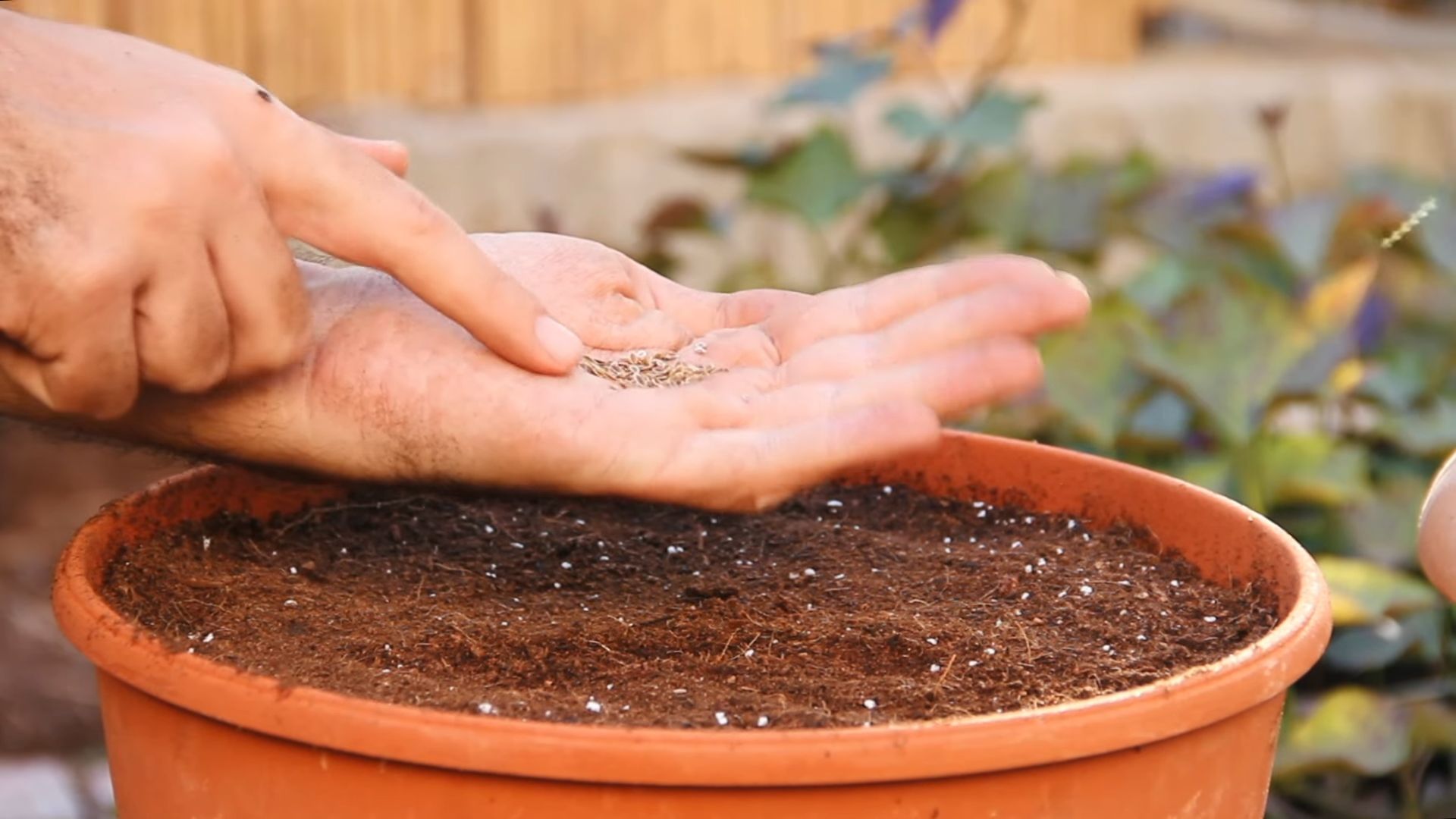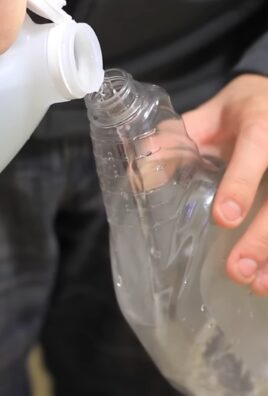Grow Dill Indoors? Absolutely! Imagine having fresh, fragrant dill readily available, even when the snow is falling outside. No more sad, wilted grocery store herbs – just vibrant, flavorful dill to elevate your culinary creations. For centuries, dill has been cherished not only for its distinct taste but also for its medicinal properties. Ancient Egyptians used it for soothing digestion, while medieval Europeans believed it warded off evil spirits.
Today, we may not be battling demons, but we are battling bland meals! And that’s where this DIY guide comes in. I’m going to show you simple, effective tricks to successfully grow dill indoors, regardless of your gardening experience. Whether you live in an apartment with limited space or simply want a constant supply of this versatile herb, this article will provide you with the knowledge and confidence to cultivate your own indoor dill garden.
Why is this DIY trick so essential? Because fresh dill adds a burst of flavor to everything from creamy dips and tangy pickles to grilled fish and hearty soups. Plus, growing your own herbs is incredibly rewarding and cost-effective. So, let’s ditch the expensive store-bought bunches and embark on this exciting journey to bring the fresh, aromatic taste of dill right into your home!

Growing Dill Indoors: A Beginner’s Guide
Hey there, fellow plant enthusiasts! Ever dreamt of having fresh, fragrant dill right at your fingertips, no matter the season? Well, you’re in the right place! I’m going to walk you through everything you need to know to successfully grow dill indoors. It’s easier than you might think, and the reward of having homegrown dill to spice up your dishes is totally worth it.
What You’ll Need
Before we dive in, let’s gather our supplies. Here’s a checklist of everything you’ll need to get started:
* **Dill Seeds:** You can find these at most garden centers or online. Make sure they are fresh for the best germination rate.
* **Potting Mix:** Use a well-draining potting mix specifically formulated for containers. Avoid using garden soil, as it can compact and hinder drainage.
* **Containers:** Choose pots that are at least 6 inches deep and wide. Dill has a taproot, so depth is important. Make sure your pots have drainage holes!
* **Grow Lights (Optional but Recommended):** Dill needs a lot of light, so if you don’t have a sunny windowsill, grow lights are essential.
* **Watering Can or Spray Bottle:** For gentle watering.
* **Small Shovel or Trowel:** For planting the seeds.
* **Seed Starting Tray (Optional):** If you prefer to start your seeds indoors before transplanting.
Choosing the Right Dill Variety
While most dill varieties will grow indoors, some are better suited than others. Consider these options:
* **’Dukat’:** This is a popular variety known for its strong flavor and compact size, making it ideal for indoor growing.
* **’Fernleaf’:** Another compact variety that’s slow to bolt (go to seed), which means you’ll have a longer harvest period.
* **’Bouquet’:** A taller variety, but still manageable indoors. It’s known for its abundant foliage.
Getting Started: Planting Your Dill Seeds
Okay, let’s get our hands dirty! Here’s how to plant your dill seeds:
1. **Prepare Your Pot:** Fill your chosen pot with the potting mix, leaving about an inch of space at the top. Gently pat down the soil to remove any large air pockets.
2. **Sow the Seeds:** Dill seeds are small, so handle them carefully. Sprinkle the seeds evenly over the surface of the soil. You can sow them quite densely, as you can always thin them out later. Aim for about 5-10 seeds per pot.
3. **Cover the Seeds:** Lightly cover the seeds with a thin layer of potting mix (about ¼ inch). Dill seeds need light to germinate, so don’t bury them too deep.
4. **Water Gently:** Use a watering can or spray bottle to gently moisten the soil. Be careful not to dislodge the seeds. The soil should be damp but not soggy.
5. **Provide Light and Warmth:** Place your pot in a warm location with plenty of light. A sunny windowsill that gets at least 6 hours of direct sunlight is ideal. If you don’t have enough natural light, use grow lights. Keep the lights on for 12-14 hours a day. The ideal temperature for germination is between 70-75°F (21-24°C).
6. **Maintain Moisture:** Keep the soil consistently moist but not waterlogged. Check the soil moisture daily and water when the top inch feels dry to the touch.
Germination and Early Growth
Now comes the waiting game! Dill seeds typically germinate within 7-14 days. Here’s what to expect during this phase:
1. **Monitor Germination:** Keep an eye on your pot for the first signs of seedlings. Once you see tiny green sprouts emerging, you know you’re on the right track!
2. **Thin Seedlings (If Necessary):** If you sowed your seeds densely, you’ll need to thin them out once they have a few sets of true leaves (the leaves that look like miniature dill plants). Snip off the weaker seedlings at the soil line, leaving the strongest ones spaced about 2-3 inches apart. This will give them enough room to grow.
3. **Continue Providing Light and Water:** Keep providing plenty of light and water as the seedlings grow. Rotate the pot regularly to ensure even growth.
Caring for Your Dill Plants
Once your dill plants are established, it’s time to focus on providing the right care to keep them healthy and productive.
1. **Watering:** Water your dill plants regularly, especially during hot, dry weather. The soil should be consistently moist but not waterlogged. Overwatering can lead to root rot, so be careful not to overdo it. A good rule of thumb is to water when the top inch of soil feels dry to the touch.
2. **Lighting:** Dill needs a lot of light to thrive. If you’re growing it indoors, make sure it gets at least 6 hours of direct sunlight per day. If you don’t have enough natural light, use grow lights. Position the lights about 6-12 inches above the plants.
3. **Fertilizing:** Dill doesn’t need a lot of fertilizer, but a light feeding every few weeks can help promote healthy growth. Use a balanced liquid fertilizer diluted to half strength. Avoid over-fertilizing, as this can lead to leggy growth and reduced flavor.
4. **Pinching and Pruning:** Pinching off the top growth of your dill plants can encourage them to branch out and produce more foliage. You can also prune away any yellowing or dead leaves.
5. **Preventing Bolting:** Bolting is when a plant prematurely goes to seed. This can happen when dill is exposed to high temperatures or stress. To prevent bolting, keep your dill plants well-watered and provide them with some shade during the hottest part of the day. You can also choose slow-bolting varieties like ‘Fernleaf’.
6. **Pest Control:** Dill is generally pest-resistant, but it can occasionally be affected by aphids or spider mites. If you notice any pests, you can try spraying them off with a strong stream of water or using an insecticidal soap.
Harvesting Your Dill
The best part! You can start harvesting dill leaves as soon as the plants are about 6-8 inches tall.
1. **Harvesting Leaves:** Use scissors or pruning shears to snip off the leaves. You can harvest individual leaves or entire stems. The more you harvest, the more the plant will produce.
2. **Harvesting Seeds:** If you want to harvest dill seeds, let the plants flower and go to seed. Once the seed heads turn brown and dry, you can cut them off and hang them upside down in a paper bag to dry completely. Once dry, you can shake the seeds out of the seed heads and store them in an airtight container.
Troubleshooting Common Problems
Even with the best care, you might encounter some challenges when growing dill indoors. Here are some common problems and how to fix them:
* **Leggy Growth:** This is usually caused by insufficient light. Make sure your dill plants are getting enough sunlight or grow lights.
* **Yellowing Leaves:** This can be caused by overwatering, underwatering, or nutrient deficiencies. Check the soil moisture and adjust your watering accordingly. You may also need to fertilize your plants.
* **Bolting:** As mentioned earlier, bolting is when a plant prematurely goes to seed. To prevent bolting, keep your dill plants well-watered and provide them with some shade during the hottest part of the day.
* **Pests:** Keep an eye out for pests like aphids or spider mites. If you notice any pests, you can try spraying them off with a strong stream of water or using an insecticidal soap.
Enjoying Your Homegrown Dill
Now that you’ve successfully grown your own dill, it’s time to enjoy the fruits (or rather, leaves) of your labor! Here are some ideas for using your fresh dill:
* **Add it to salads:** Dill adds a fresh, herbaceous flavor to salads.
* **Use it as a garnish:** Dill is a beautiful and flavorful garnish for soups, stews, and other dishes.
* **Make dill sauce:** Dill sauce is a classic accompaniment to fish and other seafood.
* **Add it to pickles:** Dill is a key ingredient in many pickle recipes.
* **Use it to flavor dips and spreads:** Dill adds a bright, fresh flavor to dips and spreads.
* **Dry it for later use:** You can dry dill leaves by hanging them upside down in a cool, dry place or using a dehydrator.
Growing dill indoors is a rewarding experience that allows you to enjoy fresh herbs year-round. With a little bit of care and attention, you can have a thriving dill plant that provides you with a constant supply of flavorful leaves and seeds. Happy gardening!

Conclusion
So, there you have it! Growing dill indoors is not only achievable, but it’s also a rewarding experience that brings a touch of freshness and flavor to your kitchen year-round. Forget those sad, wilted bunches of dill at the grocery store – with a little effort, you can have a constant supply of vibrant, aromatic dill right at your fingertips.
Why is this DIY trick a must-try? Because it empowers you to control the quality and freshness of your herbs. You know exactly where your dill is coming from, what it’s been exposed to, and how it’s been cared for. This is especially important if you’re conscious about organic gardening practices or simply want to avoid pesticides and herbicides. Plus, let’s be honest, there’s something incredibly satisfying about nurturing a plant from seed to harvest. It’s a small connection to nature that can brighten even the dreariest of days.
Beyond the practical benefits, growing dill indoors adds a touch of beauty to your home. A pot of lush, feathery dill can be a charming addition to your windowsill or kitchen counter. It’s a living decoration that also happens to be incredibly useful.
Ready to take your indoor dill growing to the next level? Consider experimenting with different varieties of dill. ‘Bouquet’ dill is a popular choice for its compact size and abundant foliage, making it ideal for containers. ‘Fernleaf’ dill is another great option, known for its finely cut leaves and slow-bolting nature. You can also try succession planting, sowing new seeds every few weeks, to ensure a continuous harvest throughout the year.
For a fun variation, try companion planting your dill with other herbs like basil or parsley. These herbs can thrive in similar conditions and create a fragrant and productive indoor herb garden. You can even add a small trellis to your pot to encourage the dill to grow upwards, maximizing space and creating a visually appealing display.
Don’t be intimidated if you’re new to indoor gardening. Growing dill indoors is relatively easy, even for beginners. Just remember to provide plenty of sunlight, well-draining soil, and regular watering. With a little patience and attention, you’ll be enjoying fresh, homegrown dill in no time.
We’re confident that you’ll love the experience of growing your own dill indoors. It’s a simple, sustainable, and satisfying way to add flavor and freshness to your meals. So, grab a pot, some seeds, and get started today!
We’d love to hear about your experiences! Share your tips, tricks, and photos of your indoor dill gardens in the comments below. Let’s create a community of indoor herb enthusiasts and inspire others to discover the joy of growing their own food. Happy gardening!
Frequently Asked Questions (FAQ)
What is the best type of dill to grow indoors?
The best types of dill to grow indoors are those that are compact and slow to bolt (go to seed). ‘Bouquet’ dill is a popular choice because it produces abundant foliage in a relatively small space. ‘Fernleaf’ dill is another excellent option, known for its finely cut leaves and its resistance to bolting. These varieties are well-suited for container gardening and will provide you with a steady supply of fresh dill. Avoid larger, more sprawling varieties that may outgrow your indoor space quickly.
How much sunlight does indoor dill need?
Dill requires a significant amount of sunlight to thrive indoors. Aim for at least 6-8 hours of direct sunlight per day. A south-facing window is ideal, but if you don’t have one, a west-facing window can also work. If you’re not getting enough natural light, consider supplementing with a grow light. Position the grow light a few inches above the dill plants and keep it on for 12-14 hours per day. Insufficient sunlight can lead to leggy, weak growth and a less flavorful herb.
What type of soil is best for growing dill indoors?
Dill prefers well-draining soil that is rich in organic matter. A good potting mix specifically formulated for herbs is a great choice. You can also create your own mix by combining equal parts of potting soil, compost, and perlite or vermiculite. The compost will provide essential nutrients, while the perlite or vermiculite will improve drainage and aeration. Avoid using garden soil, as it can be too heavy and may contain pests or diseases.
How often should I water my indoor dill?
Water your dill regularly, but avoid overwatering. The soil should be consistently moist, but not soggy. Water when the top inch of soil feels dry to the touch. Be sure to use a pot with drainage holes to prevent water from accumulating at the bottom, which can lead to root rot. During the warmer months, you may need to water more frequently. In the winter, when growth slows down, you can reduce watering.
How do I harvest dill from my indoor plants?
You can start harvesting dill leaves as soon as the plants are a few inches tall. Simply snip off the leaves with scissors or pruning shears. Avoid removing more than one-third of the plant at a time, as this can stress the plant and slow down growth. For the best flavor, harvest dill in the morning, after the dew has dried. You can use the fresh dill leaves immediately or store them in the refrigerator for a few days.
How do I prevent dill from bolting indoors?
Bolting is when a plant prematurely goes to seed, which can make the leaves taste bitter. To prevent dill from bolting indoors, provide adequate sunlight, consistent watering, and cool temperatures. Avoid letting the soil dry out completely, and keep the plants away from heat sources. You can also pinch off any flower buds that appear to encourage the plant to focus on leaf production. Choosing slow-bolting varieties like ‘Fernleaf’ dill can also help.
Can I grow dill from seed indoors?
Yes, you can easily grow dill from seed indoors. Start by sowing the seeds in a pot filled with well-draining potting mix. Lightly cover the seeds with soil and water gently. Keep the soil moist but not soggy, and place the pot in a warm, sunny location. The seeds should germinate in about 7-14 days. Once the seedlings have developed a few sets of true leaves, you can thin them out, leaving only the strongest plants.
What are some common pests and diseases that affect indoor dill?
Common pests that can affect indoor dill include aphids, spider mites, and whiteflies. These pests can suck the sap from the leaves, causing them to become yellow and distorted. To control these pests, you can spray the plants with insecticidal soap or neem oil. Diseases that can affect indoor dill include powdery mildew and root rot. Powdery mildew is a fungal disease that causes a white, powdery coating on the leaves. Root rot is caused by overwatering and can lead to the roots decaying. To prevent these diseases, provide good air circulation, avoid overwatering, and use well-draining soil.
How do I store fresh dill from my indoor garden?
To store fresh dill, rinse the leaves and pat them dry with a paper towel. You can then wrap the dill in a damp paper towel and store it in a plastic bag in the refrigerator. This will help to keep the dill fresh for up to a week. Alternatively, you can freeze dill for longer storage. To freeze dill, chop the leaves and place them in ice cube trays filled with water or olive oil. Once frozen, transfer the dill cubes to a freezer bag. You can also dry dill by hanging the stems upside down in a cool, dry place. Once the leaves are completely dry, crumble them and store them in an airtight container.
Can I use fertilizer on my indoor dill plants?
Yes, you can use fertilizer on your indoor dill plants, but it’s important to use a balanced fertilizer and avoid over-fertilizing. A liquid fertilizer diluted to half strength is a good option. Fertilize your dill plants every 2-4 weeks during the growing season. Look for a fertilizer that is specifically formulated for herbs or vegetables. Over-fertilizing can lead to leggy growth and a less flavorful herb.




Leave a Comment